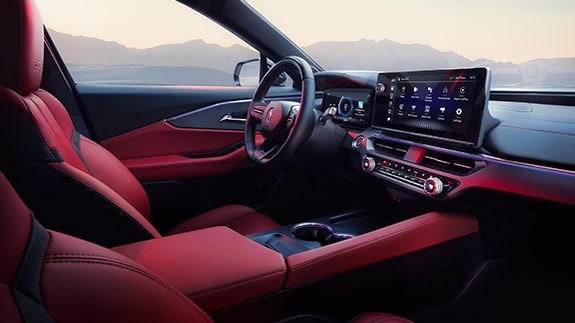A vehicle identification number (VIN) is the 17-digit "name," made up of numbers and characters, that an automobile manufacturer assigns to an individual vehicle. Vehicle identification numbers can reveal many things about automobiles, including their airbag type, country of origin, engine size, model year, vehicle type, trim level and plant name. The VIN (sometimes known, redundantly, as the "VIN number") can also be used to check on safety recalls or obtain a vehicle history report. We will show you how later, but first we'll cover the background and basic facts of a vehicle's VIN.
VIN Lookup: How to Decode Your VIN
What 17 numbers & letters can tell you about your car
VIN basics
The first VIN dates back to 1954, and for decades, VINs came in a wide variety of configurations, depending on the individual automaker. Vehicles from the '50s and up to 1980 cannot be decoded by modern methods. Instead, you'll need to get in touch with your Department of Motor Vehicles or contact the automaker directly.
In 1981, the National Highway Traffic Safety Administration mandated that all vehicles from that point forward must have a standardized 17-digit vehicle identification number.
Typically, the vehicle identification number is stamped into a plate that's mounted on the dashboard near the windshield or the driver-side doorjamb. It's also stamped on the engine's firewall.
Modern 17-digit VINs can be used to access vehicle history reports, which can reveal many records relating to a vehicle, including ownership, accident and repair histories.
Also, car owners and used-car shoppers can enter a VIN in the National Highway Traffic Safety Administration's VIN lookup tool to see if there are open recalls on a vehicle.
Recommended VIN decoders
The National Highway Traffic Safety Administration's website offers two free VIN check tools that allow you to either decode your VIN or check for a recall. We've tested both tools and found them to be fast and accurate. They also won't bombard you with pop-up ads or try to sell you something. If you're looking to sell your car, you can run a VIN check on Edmunds to get an instant cash offer, good for seven days at participating dealerships.
What do the letters and numbers mean in a VIN?
VIN information is organized in groups, and a search of your vehicle identification number can tell you a lot about your car. There's even a bit of fraud detection in the VIN in the form of the "check digit," described below.
The first group of three numbers and letters in a VIN make up the world manufacturer identifier (WMI).
In this group, the first digit or letter identifies the country of origin. For example, cars made in the U.S. start with 1, 4 or 5. Canada is 2, and Mexico is 3. Japan is J, South Korea is K, England is S, Germany is W, and Sweden or Finland is Y.
The second element in this group tells you about the manufacturer. In some cases, it's the letter that begins the manufacturer's name. For example, A is for Audi, B is for BMW, G is for General Motors, L is for Lincoln, and N is for Nissan. But an A can also stand for Jaguar or Mitsubishi, and an R can also mean Audi. It may sound confusing, but the next digit ties it all together.
The third digit, when combined with the first two letters or numbers, indicates the vehicle's type or manufacturing division. This Wikipedia page has a list of WMI codes.
The next six digits to check (positions 4-9) are the vehicle descriptor section.
Numbers 4 through 8 describe the car with such information as the model, body type, restraint system, transmission type and engine code.
Number 9 is the check digit, which is used to detect invalid VINs. The number that appears varies and is based on a mathematical formula that the U.S. Department of Transportation developed.
The following group of eight elements (10-17) is the vehicle identifier section.
In the 10th position, you'll see a letter indicating the model year. The letters from B to Y correspond to the model years 1981 to 2000. The VIN does not use I, O, Q, U or Z. From 2001 to 2009, the numbers 1 through 9 were used in place of letters. The alphabet started over from A in 2010 and will continue until 2030.
Yes, it's a bit confusing. Here are the model years since 2000: Y=2000, 1='01, 2='02, 3='03, 4='04, 5='05, 6='06, 7='07, 8='08, 9='09, A='10, B='11, C='12, D='13, E='14, F='15, G='16, H='17, J='18, K='19, L='20, M='21, N='22, P='23, R='24, S='25.
The letter or number in position 11 indicates the manufacturing plant where the vehicle was assembled. Each automaker has its own set of plant codes.
Production numbers (positions 12-17)
The final six digits are the production sequence numbers, which each car receives on the assembly line.
Other VIN decoder uses
A simple VIN decoder will help you learn an automotive pedigree and some key specifications, but those digits are also useful for less entertaining but more important reasons involving its title, registration and insurance. Make sure to check the VIN when purchasing replacement parts for your vehicle. Vehicle parts are often specific to certain VINs and may not fit your car if you only go by its year, make and model.
VIN decode FAQs
NOTE: Although "VIN" technically includes the word "number," people frequently use the phrase "VIN number" in their searches, which is why we're following that convention here.
See Edmunds pricing data
Has Your Car's Value Changed?
Used car values are constantly changing. Edmunds lets you track your vehicle's value over time so you can decide when to sell or trade in.


 by
by 
